There are few things more frustrating for a gardener than seeing it’s a lovely day outside, getting prepared for a day of garden maintenance, getting fired up to mow the lawn and…your mower doesn’t start.
When you’re in the perfect headspace for crossing “mow the grass” off your gardening chore to-do list but your lawn mower is being difficult, it can make you want to launch the whole mower across the garden. You might find yourself asking “why is this happening, why now?” and the answer could be down to a faulty starter.
In order to ascertain if the problem is indeed with your lawn mower’s starter, you’ll need to test it to be able to rule out other issues. A multimeter is a handy tool that can help you to do just that, allowing you to make any necessary repairs and get back on track to tidy up that unruly lawn!
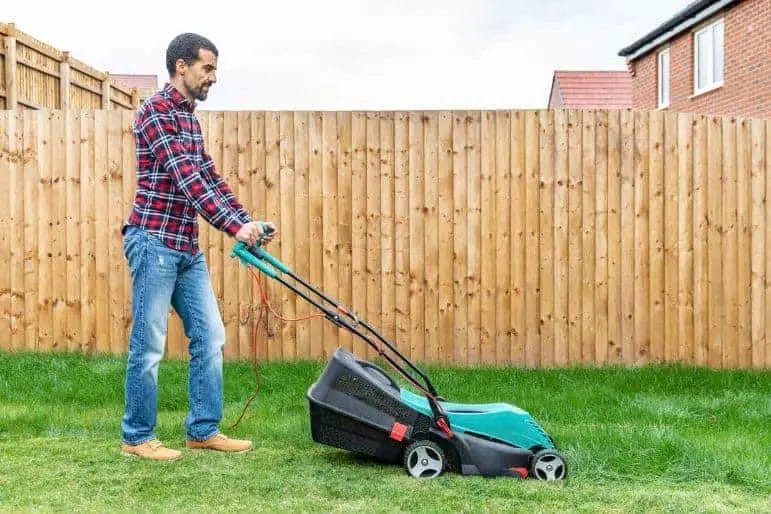
A multimeter, for anyone who doesn’t know, is a device that measures electrical values such as voltage (volts – V) and current (amps – SI). Multimeters can be used as a diagnostic tool to test components of electrical devices, and when talking about lawn mowers specifically, they can be used to test for faults in engine starters – luckily for us!
Multimeters come in analogue and digital forms although digital models far outnumber analogue ones nowadays as they allow you to measure values much more precisely and accurately than an analogue needle is capable of.
Because multimeters can be used to measure several different kinds of values, they can be configured for these different values specifically. For example, if you wanted to test voltage, you’d configure your multimeter for reading volts, and if you wanted to measure resistance, you’d configure it for ohms (unit for measuring electrical resistance).
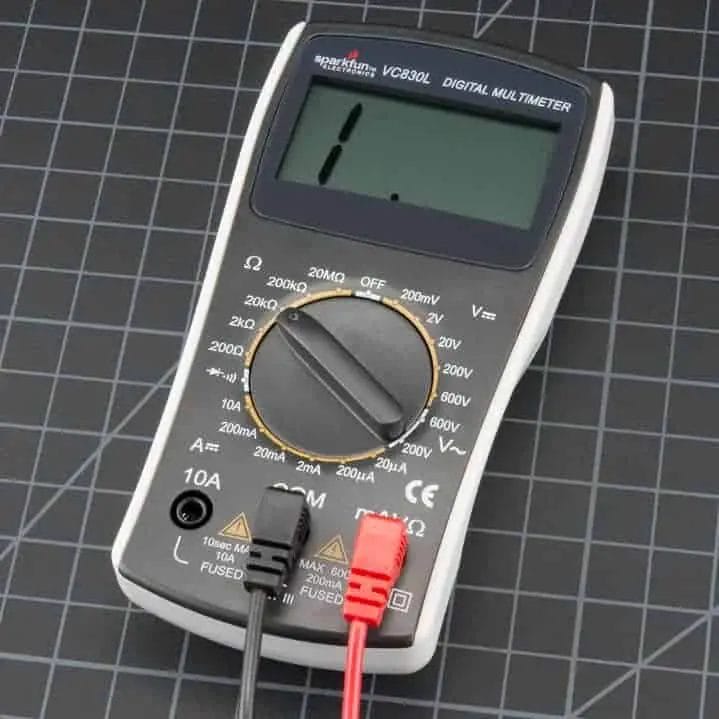
Your multimeter will have two cables coming out of it – a red one and a black one. The red cable is for connecting to the positive terminal of your lawn mower battery and the black one is for hooking up to the negative terminal.
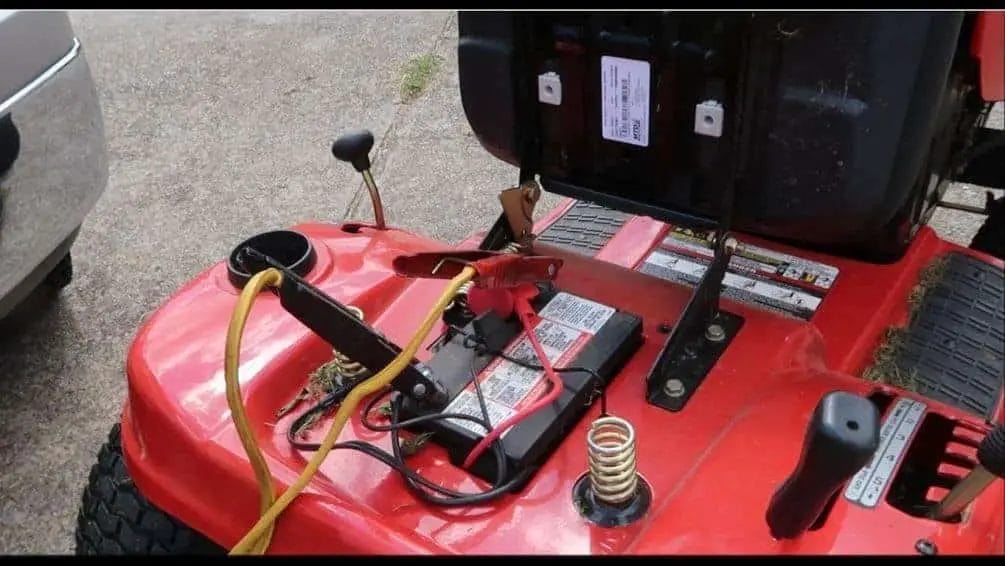
Set your multimeter up to measure voltage rather than the other values it can measure, and hook it up to the battery as described above. Measure the battery charge and check that it is fully charged (most lawn mowers are charged fully at 12V but this may vary slightly from type to type and model to model).
If your battery is not fully charged, you’ll need to charge it up before you begin testing the starter as a full battery is required for this process to ensure that low battery is not causing the ignition issues.
After checking your battery charge, disconnect the battery from the engine and check the terminals and cable ends for any signs of corrosion or dirt build-up. If there is any dirt or rust, you’ll need to clean this as best you can before moving forward.
It is vital when dealing with electrical systems such as these that all components are clean as this will enable un uninterrupted electrical circuit to form whereas dirt and corrosion can block electrical current. Likewise, you should also check and clean the solenoid and engine starter motor.
Once you’re confident that all your parts are clean and free of corrosion, you’ll need to remove the starter from the lawn mower. This should be fairly easy to do and depending on the type and model of lawn mower you have, you should be able to do so with a screwdriver or wrench.
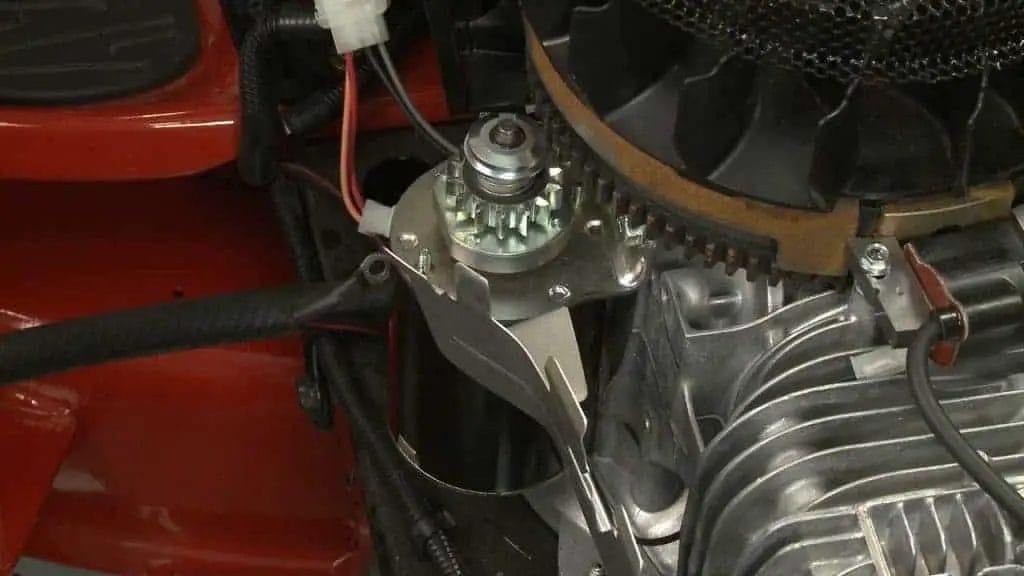
You’re also going to need a power source that can supply 12 volts of power, as well as some jumper cables or similar. The positive terminal on the starter will be easily identifiable as it looks like a small post protruding out the side of the starter, but the negative terminal is a little different – rather than a distinct post, the negative terminal will just be the frame of the starter itself.
Connect your power supply to the starter, ensuring the black cable is attached to the starter frame. You can then connect the red cable to the positive terminal. If your power supply has an on/off switch, nothing should happen until it is switched on.
When your power source is switched on, having both terminals engaged should result in the starter flywheel spinning. If this happens, then you know your starter is working correctly. If the flywheel does not spin, then there’s something wrong with one of the connections or other internal components.
You can double confirm that your starter is working correctly by connecting it to your multimeter, which should show a reading that matches the power supply (in this case, 12 V).
It might be time to check the other parts that work in conjunction with the starter, the key one being the solenoid. Testing your lawn mower solenoid can be done in much the same way as testing the starter itself.
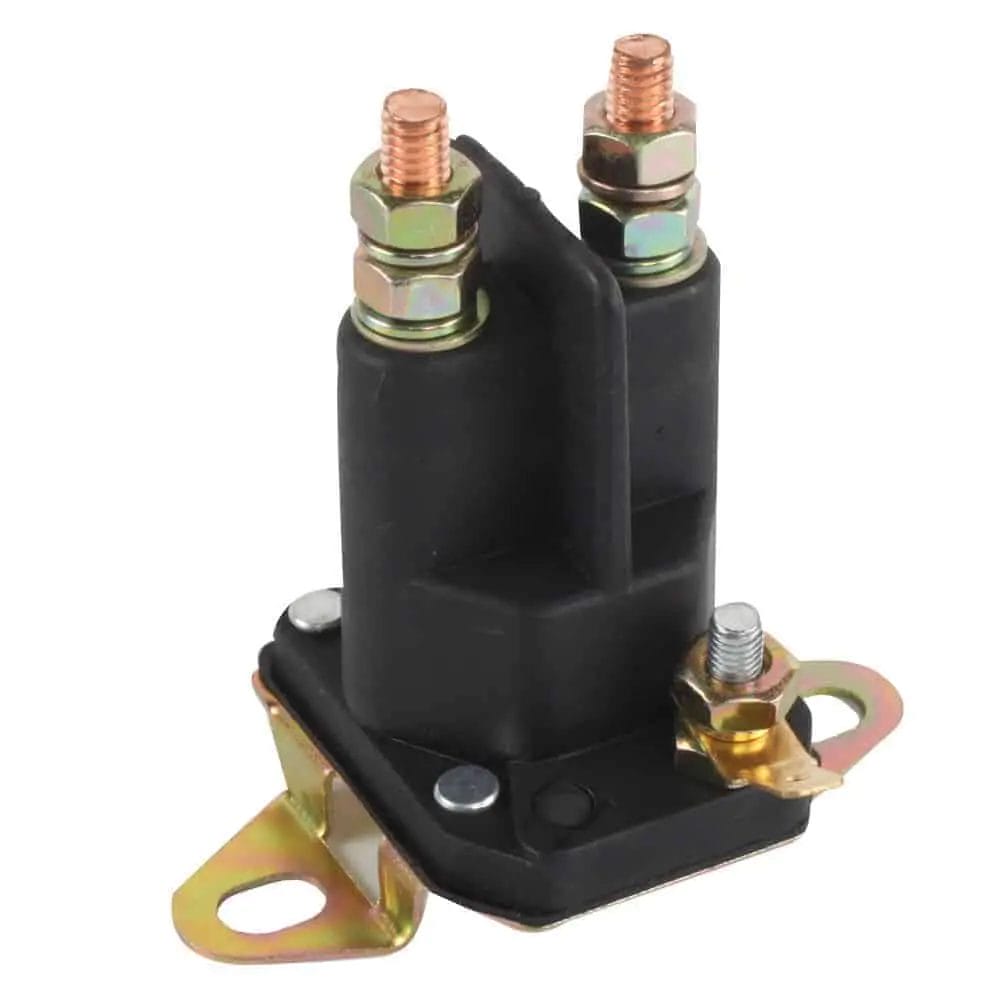
Once it has been removed from the lawn mower, you’ll need to have your power source and multimeter handy. Connect the black cable of your power source to the negative terminal (or solenoid frame if your solenoid doesn’t have a negative terminal post) and connect the red cable to the positive terminal.
If all is well with the solenoid, turning the power supply on should result in a clicking sound from the solenoid. Connect your multimeter to the solenoid posts and set it to voltage to ensure that the reading matches the 12 V of the power supply. If you get a lower reading, then not all of the power from the power supply is reaching the solenoid which indicates damage.
While it can be annoying and frustrating when your lawn mower doesn’t start the way it should, there are several signs you can look for to help you to identify a bad starter. The earlier you recognise these signs, the sooner you’ll be able to resolve the issue and prevent further damage to your lawn mower engine.
Noise is one of the most helpful indicators that something could be wrong with your starter. If you hear a clanking, clicking, or chattering noise whilst mowing or if there’s just a singular click when you try to start the mower and nothing else happens, then it’s likely down to a starter fault.
You might also hear a whirring sound as you try to start the motor which is not followed by the recognisable rumble of the engine engaging. This means that the starter is not catching and the mower will not start.
Another obvious one is if your lawn mower simply does not respond to attempts to start it. If your mower works using an ignition key or switch, never press or turn it for longer than 10 seconds as this could damage the solenoid. If your mower doesn’t start after a short try, turn it back off and try again several times rather than holding the ignition for too long.
Most of us gardeners are not mechanics by trade. We don’t all know every in and out of a lawn mower engine and as such, we won’t necessarily be able to detect and correct every problem that our lawn mowers throw at us.
In order to avoid damaging our lawn mowers more by recklessly poking around and interfering, it’s always best to call a professional to help. If you don’t know what you’re doing, there will be someone out there who does!
Getting a professional to repair lawn mower engine faults might be a costly exercise, depending on what needs to be done, but it’ll be a worthy investment once your mower is up ad running again without complications!